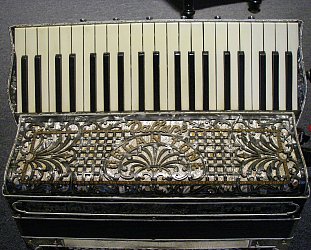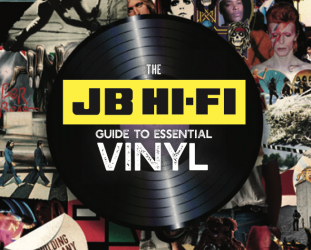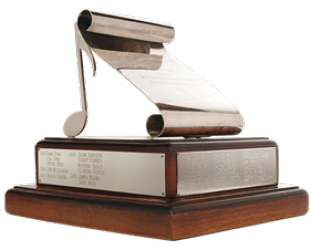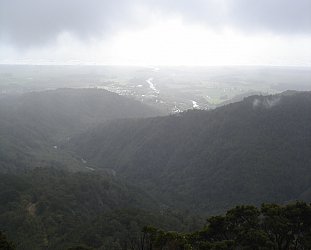Graham Reid | | 2 min read

The day that the Sky digital network crashed and deprived 550,000 subscribers -- us included -- of programmes two curiously ironic things occurred for me: that very morning I tried to buy a transistor radio, and in the afternoon I looked out my wind-up gramophone.
It was coincidence, but it was also as if I had known that hi-tech would fail me sooner or later so I was into forward thinking with backward equipment.
The transistor was to be a birthday present for my father-in-law, some sturdy affair he could cart around the orchard. I had in mind something the size and shape of a hardback novel, enclosed in a brown leather snap-on cover and with a long extendable aerial at the top.
In truth, I was looking for the same transistor I had in the 60s which survived being hung up and bashed against the car window on trips to Whangamata and Orewa, boozy parties, and hundreds of paint-splattered hours as I worked my way around my parents’ house with a broad brush and cans of primer, undercoat and sticky oil paint.
At a chain store I searched the shelves stacked with gleaming coffee makers, massive toasters and stereo systems with brutally ugly speakers for a new version of my old transistor.
The only radios I could find were plastic clock-alarm things, mass produced in a factory which doubtless used slave labour then harvested workers’ internal organs if they slowed down the production line.
I asked a Maori woman at the counter if they had transistor radios. She laughed loudly. 
“I haven’t heard those words for years. I remember my dad always had one on the building sites.”
We were of the transistor generation and so exchanged stories, me telling of how we’d huddle around one during lunchtimes at school and listen to Radio Hauraki .
Later I went to a secondhand shop and admired some classic old radios -- I’m going back for the bright orange Aragato soon -- but there were no transistors.
I finally found one in a Dick Smiths and stood in a queue behind a man buying a flat-screen digital television the size of our car.
The transistor seemed solid enough to tote around the orchard, although it didn’t come with a leather wrap-around and the aerial looked measly. But it was an actual transistor radio.
There was a reason for pulling out the gramophone that same afternoon. I had been invited to give a talk to some music and arts students on a topic I thought of myself: Alternative Methods of Marketing Music in the World of MySpace.
I don’t know a lot about MySpace -- the on-line drop-in centre where hundreds of thousands of musicians post their noises in the hope of attracting fans, fame and a fortune -- and I probably know even less about marketing.
But I do have a collective memory which reaches back to crystal sets, and thought I’d amuse these iPod toting young people with stories of how music has been marketed in the past, from sheet music through payola to radio DJs (money in the 50s, cocaine in the 80s) and onward into the Sony Walkman era and beyond.
And what better place to start than with a piece of amusing old wind-up technology weighing about as much as chillybin full of beer, and just as enjoyable to take to the beach?
That afternoon I played one fragile 78 after another, delighting in the crackling sound.
Just before dinner I did a little work on the computer then while pottering at the stove I banged on a CD.
From gramophone to transistor to computer to CD player, it had been a day when equipment I had either forgotten or taken for granted had been there at my fingertips.
Then we turned on the television and Sky digital had gone down. Even our new MySky thing -- which I thought simply stored programmes like a video recorder -- didn’t function.
Technology had failed us.
So I wound up the gramophone again.







post a comment